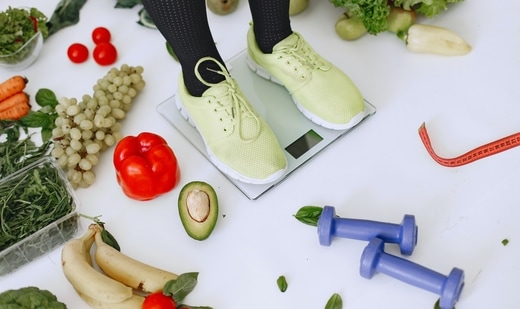
20 foods with ‘almost zero calories’: Can they lead to ‘incredible weight loss’? Here's what you need to know
5 months ago | 5 Views
Drink plenty of water, eat a variety of fruits and vegetables, and do some physical activity every single day: Much of the advice we associate with a healthy lifestyle has remained the same for decades. What has changed is the sheer amount of online fitness and weight loss advice targeted at people interested in healthy living. The Instagram page Fit Mom Club recently shared one such post about 20 foods with ‘almost zero calories’ that could help you lose weight.
To find out if these could actually work and lead to ‘incredible weight loss', we asked Dr Rakesh Gupta, senior consultant in internal medicine at Indraprastha Apollo Hospitals, for his take on 'almost zero-calorie' foods and his advice for building a more balanced lifestyle.
List of 20 'almost 0-calorie' foods that can help you
Sharing the list, Fit Mom Club wrote in their Instagram caption, “Incorporating low-calorie foods into your meals is a great way to increase the volume of your healthy breakfasts, lunches, and dinners without dramatically upping the calorie count. Filling low-calorie meals can also make a great diet for weight loss. (Exercise and sleep are important, too!) So, look for foods that contain adequate protein and fibre, and pair with a good source of healthy fats. When fibre, protein, and fat are consumed together, you will be fuller for longer.”
They wrote, “While zero-calorie foods don't exist, many options are extremely low in calories and can support a healthy thyroid and help manage PCOD (Polycystic Ovarian Disease).”
Here's a list of 20 foods that can help you, according to them:

Vegetables
1. Cucumber
2. Bottle gourd
3. Indian round gourd
4. Bitter gourd
5. Fenugreek leaves
6. Spinach
7. Cabbage
8. Broccoli
9. Zucchini
10. Carrot
Fruits
11. Papaya
12. Guava
13. Apple
14. Pear
15. Strawberries and blueberries
Spices and herbs
16. Curry leaves
17. Coriander leaves
18. Ginger
19. Garlic
20. Turmeric
They added, “These vegetables are not only low in calories but also high in fibre, aiding in weight management. Fruits such as papaya and guava promote digestion and have a low glycemic index, which is beneficial for managing PCOD. Spices and herbs like ginger, garlic, and turmeric possess inflammatory properties that support thyroid function and help alleviate PCOD symptoms.”

But would these actually make a difference?
Dr Rakesh Gupta says incorporating low-calorie foods into your meals is an effective strategy for enhancing the volume of your breakfasts, lunches, and dinners while keeping calorie counts in check. This approach not only supports weight loss but also promotes a feeling of fullness, making it easier to adhere to dietary goals, he says.
So, what are the benefits of low-calorie foods? Dr Rakesh Gupta says, "Low-calorie foods are typically high in water and fibre, which contribute to their low energy density. This means you can consume larger portions without significantly increasing your calorie intake. For example, leafy greens like spinach and kale are excellent choices; they are nutrient-dense and can be used as a base for salads or added to smoothies, providing bulk without excess calories." He adds, "Similarly, vegetables such as zucchini and cauliflower can be transformed into noodles or rice substitutes, allowing for satisfying meals that are low in calories."
Key components: Protein, fibre and healthy fats
To maximise satiety, Dr Rakesh Gupta says it's essential to pair low-calorie foods with adequate protein and healthy fats: foods like Greek yogurt, legumes (such as lentils and black beans), and lean meats (like chicken breast) are rich in protein and help maintain fullness longer.
He says, “Including healthy fats from sources like avocados or olive oil can also enhance satisfaction after meals. The combination of fiber, protein, and fat slows digestion and stabilises blood sugar levels, reducing cravings between meals.”

Practical meal ideas to incorporate these principles
⦿ Breakfast: Oatmeal topped with Greek yoghurt and berries for a fibre-rich start.
⦿ Lunch: A large salad filled with mixed greens, grilled chicken, chickpeas, and a light vinaigrette.
⦿ Dinner: Zucchini noodles topped with marinara sauce and turkey meatballs.
Final thoughts
Dr Rakesh Gupta says that incorporating high-volume, low-calorie foods into your diet not only aids in weight management but also ensures that you feel satisfied after meals. By focusing on nutrient-dense options rich in protein and fibre, you can enjoy larger portions while keeping your calorie intake low. This mindful approach to eating fosters healthier habits and supports overall well-being.
Read Also: Bananas may be an effective remedy for anxiety, says my mom





















